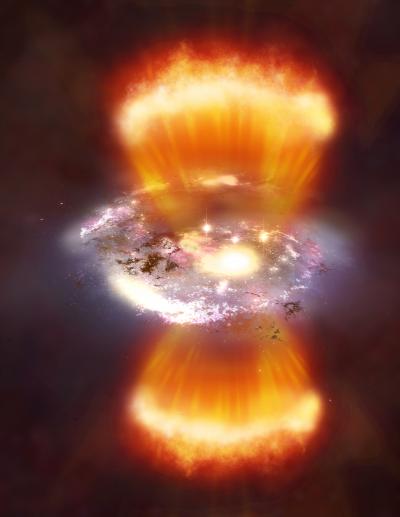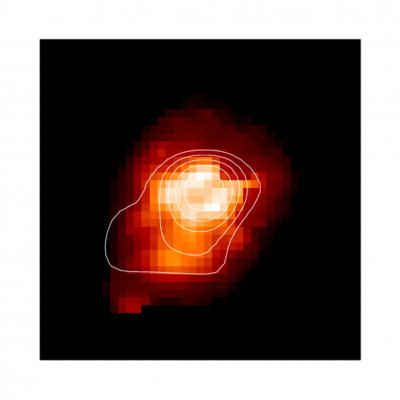Trillions of galactic explosions - one every second for millions of years, about 3 billion years after the big bang are responsible for regulating the size of galaxies. Until now this was a theoretical event, now researchers have discovered evidence of its existence

Scientists have found evidence that a catastrophic event was responsible for stopping the birth of stars in the galaxy in the early universe. According to the findings, just 3 billion years after the Big Bang, massive explosions trillions of times more powerful than the most advanced atomic bombs occurred. These explosions have occurred every second for millions of years. "We look into the past and see catastrophic events that ultimately ignited the star formation process and stopped the growth of a typical massive galaxy in the local universe," says lead researcher Dr. Dave Alexander of Durham University.
The researchers used the Gemini Observatory's Near Infrared Spectrometer (NIFS) and used the instrument to observe the galaxy
. They noticed features not seen in a galaxy closer to the Milky Way, which indicated a major event that quickly halted all star formation in the early galaxies and stopped their growth.
These catastrophic events occurred when the universe was about a quarter of its current age. The explosions dispersed the gas needed for star formation and allowed it to escape the galaxy's gravitational pull, causing the galaxy's growth to be regulated. said the scientists. They believe that large bursts of energy were caused either by the eruption of remnants from the black hole at the center of the galaxy or that a huge wind was created by supernovae.
Theorists, including scientists at Durham University, claimed that this cloud formed due to the flow of energy from the galaxies, tore them to pieces and prevented the formation of new stars. However, evidence of this process has not been found so far. The team hopes that the new data will be able to increase our understanding of the process of the formation of galaxies and their evolution.

The team led by researchers from Durham University are now looking forward to studying other galaxies where massive star formation took place in the early universe to see if they too have similar characteristics. The study was published in the March issue of the Journal of the British Royal Astronomical Society.

2 תגובות
It is interesting how much our lives depended on these processes
I don't know... the mechanism makes sense to me, the article doesn't exactly explain how to see the proof.
The really good thing that came out of this is the link to Universe Today where I learned they have a podcast.
Shabbat Shalom,
Ami Bachar